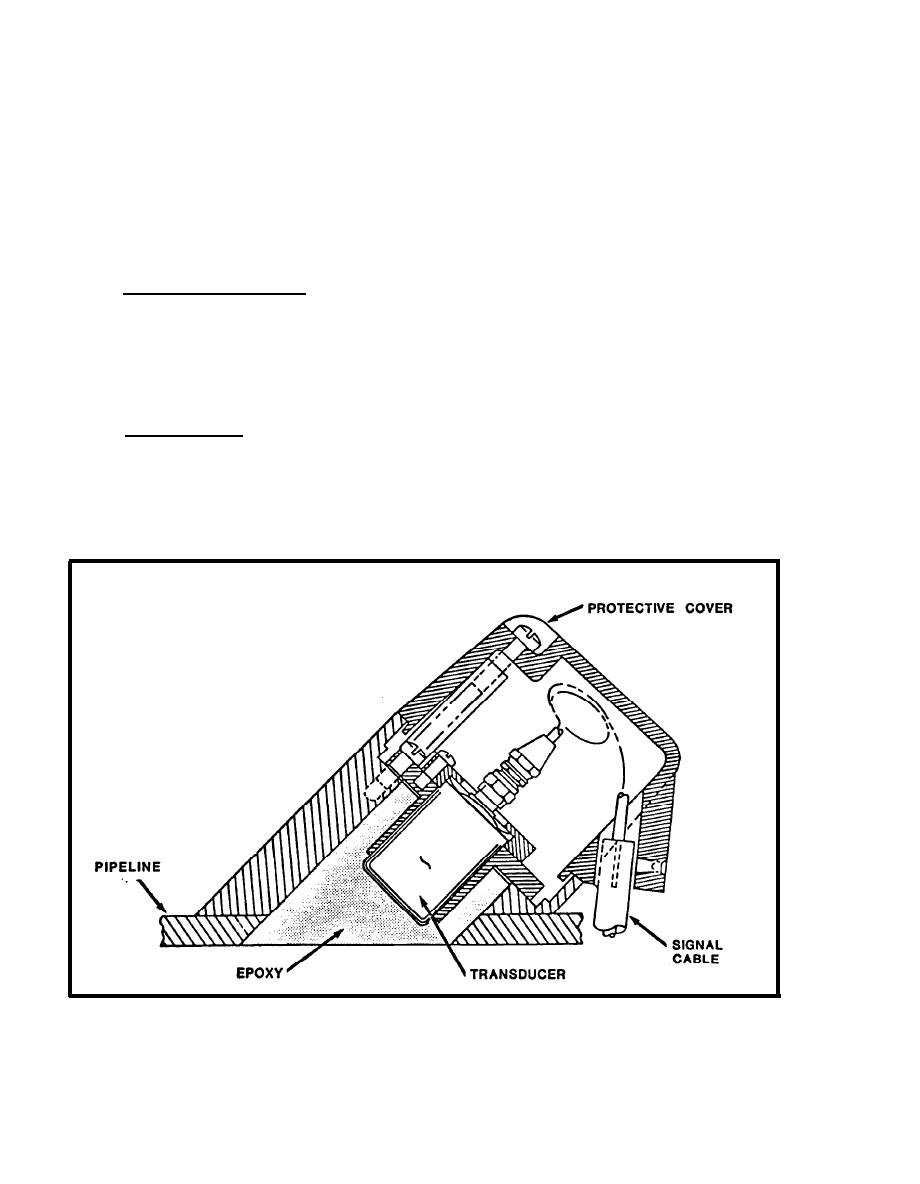

Custom Search
|
|

|
||
 Section 4. ULTRASONIC FLOWMETERS
1. INTRODUCTION. Ultrasonic flowmeters employ a basic principle of frequency
shift (doppler effect) to measure flow rate of liquids. This type meter is
totally exterior to the pipe, creates no pressure drop, and is not worn or
damaged by liquids or slurries being measured. Being exterior, these
flowmeters are constant in cost regardless of pipe size.
1.1 Operating Principles. Ultrasonic flowmeters use transducers to send and
receive reflected signals from impurities in the flowing liquid measured. The
signals are unaffected by temperature, density, or viscosity of the fluid.
2. METER DESIGNS. Ultrasonic flowmeters are divided into two groups, doppler
effect and time-of-travel. Both designs provide accurate measurements for
flow in either direction.
suspended particles in a flowing liquid. Two transducer elements are
contained in a single transducer, a transmitting element and a receiving
element. The transducer is potted in epoxy and inserted inside a fitting that
has been welded to the pipe (Figure 6-11). A window cut in the pipe allows
the transmitted signal of the transducer to enter the liquid, strike a
particle, and be reflected back to the transducer. Solids, bubbles, or other
FIGURE 6-11.
Doppler Ultrasonic Flowmeter
6-20
|
 |
|
 |
||